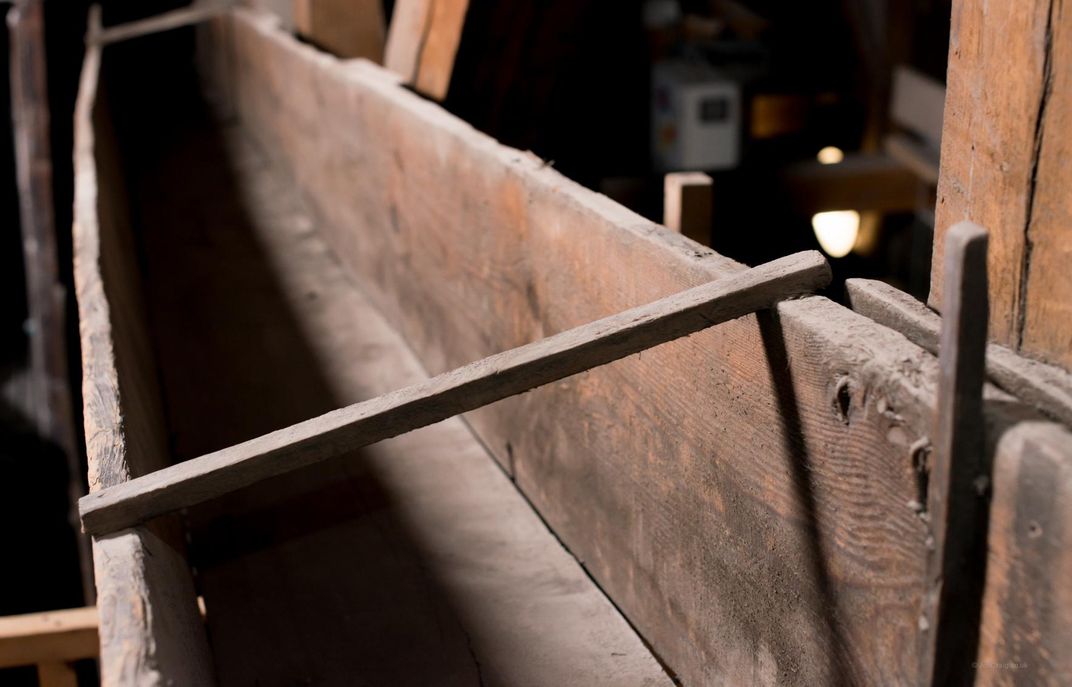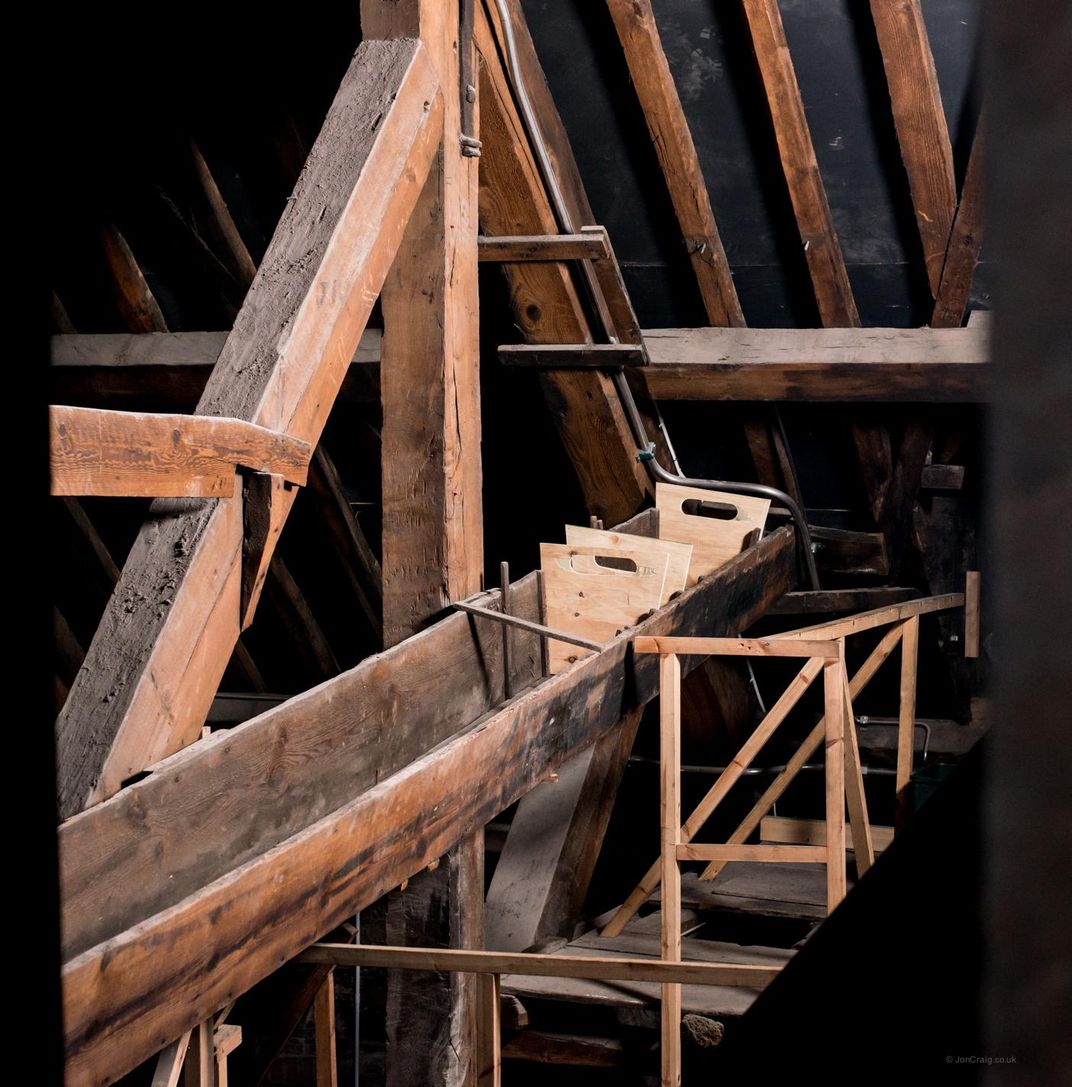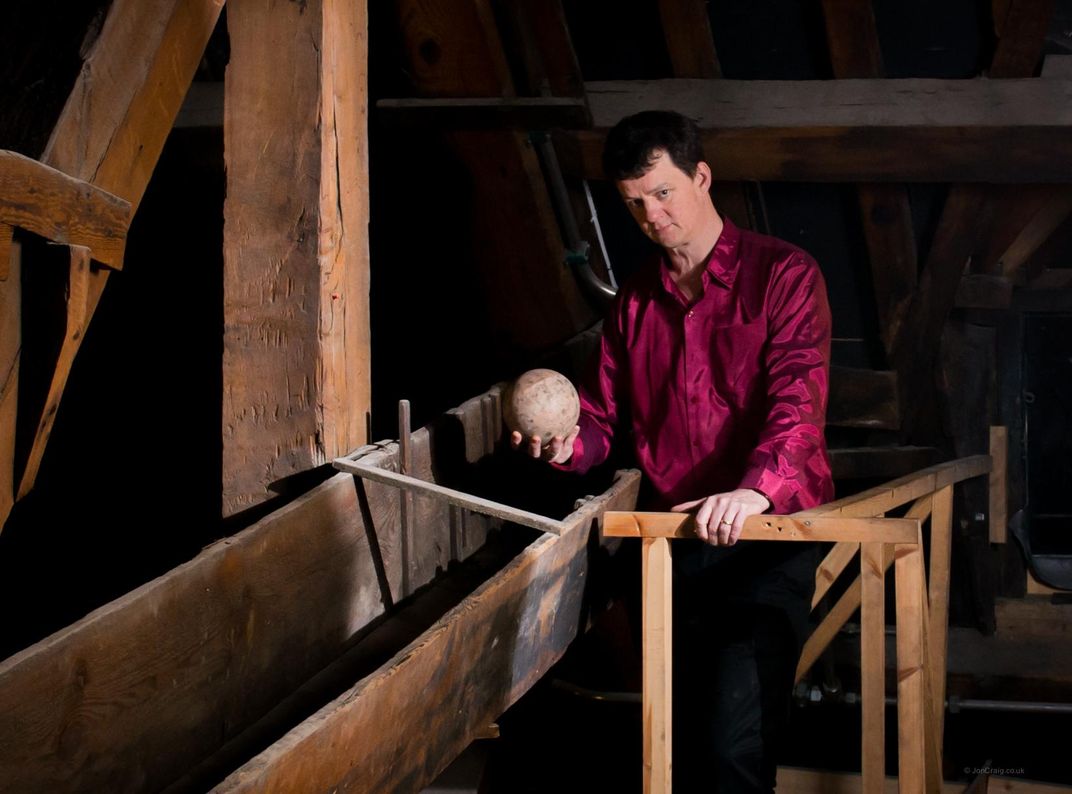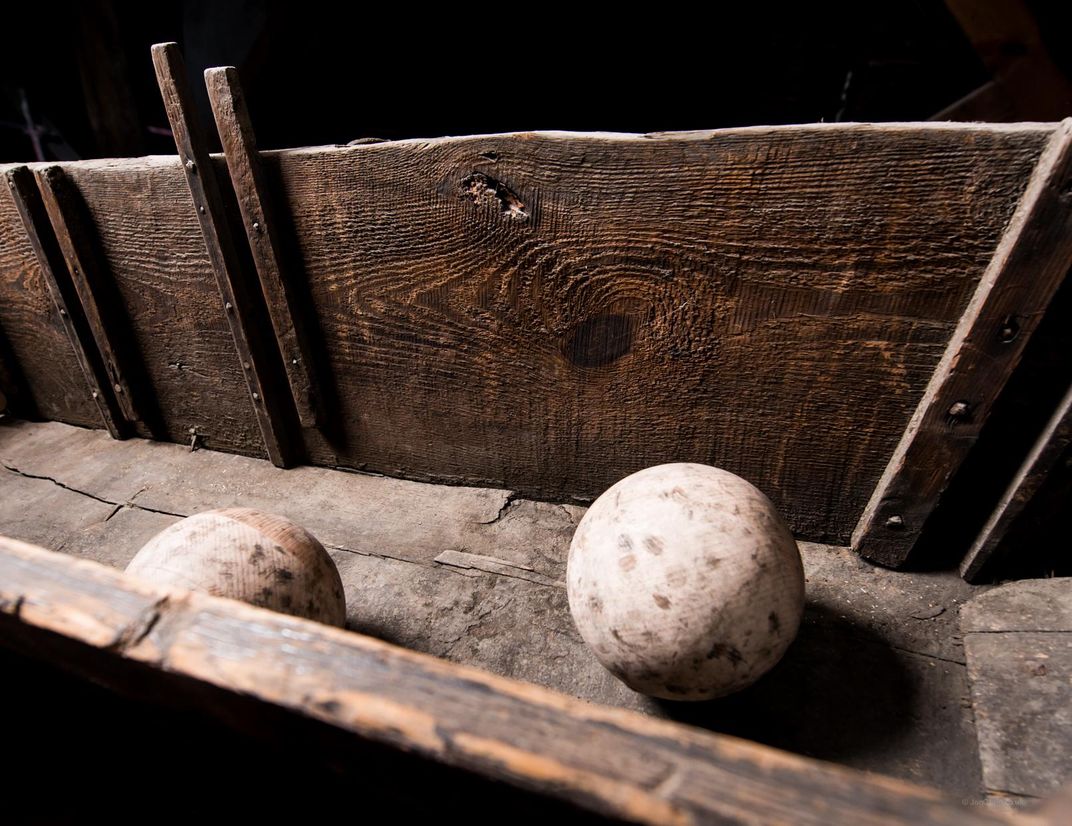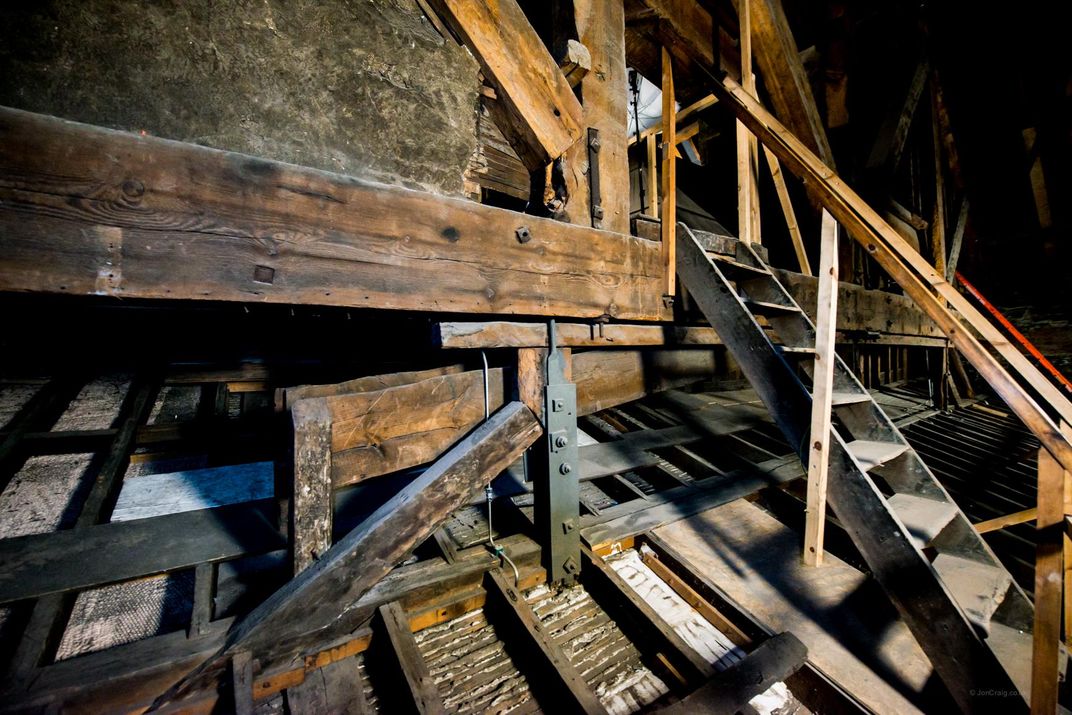A New Production of “King Lear” Features 18th-Century Special Effects
The Bristol Old Vic’s thunder run hasn’t been used since 1942
In the third act of Shakespeare’s "King Lear," the eponymous king rages against an ominous thunderstorm. “Blow, winds, and crack your cheeks! rage! blow!” Lear rants as he wanders about in the rain. Now, audiences at the Bristol Old Vic’s new production of the tragic play will get to experience that thunderstorm the way that 18th-century theatergoers did, with a device called a “thunder run.”
On the surface, the thunder run is pretty simple: housed in the 250-year-old theater’s ceiling, the machine simulates the booming of a thunderstorm by rolling heavy wooden balls down a long, wooden track. It might not sound too impressive next to the special effects wizardry available today, but to audiences in the Georgian era, calling up the sounds of a thunderstorm on command was cutting-edge technology, Allison Meier writes for Hyperallergic.
“We need to remember in 1766, this was the latest technology,” Tom Morris, the Bristol Old Vic’s artistic director, tells Jon Kay for the BBC. “Every once in awhile, it’s great to get a sense of what it was like."
First opened in 1766, the Bristol Old Vic is one of the United Kingdom’s oldest theaters. The thunder run dates back to around that same time, but hasn’t been used since 1942. Ever since Morris first took over the theater in 2009, he has been working to get the thunder run back in working order, Meier reports. After years of restoration, the device is finally thundering once again, just in time for the theater's 250th anniversary.
“We were reaching a point where no one in living memory had heard it used,” Bristol Old Vic spokesperson Amanda Adams tells Meier.
Because it had been so long since the thunder run was put to use, Wilmore spent three days figuring out how to get the best sounds out of the device. At first, he experimented with heavy lead balls, as historians long believed that 18th-century theater artists likely used cannonballs to get the effects. However, after testing balls made at different sizes and out of various materials, Wilmore and the theater’s technical staff found that heavy wooden balls produced the best sounds, Meier reports.
The thunder run works by rolling large, heavy wooden balls down a spiralling gutten made from pitch pine. As the balls roll down the track, the sound echoes through the theater’s rafters as the vibrations shake the building’s foundations to mimic the sensation of standing in the middle of a furious thunderstorm, Kay reports.
“The whole thing rumbles and reverberates around this cathedral,” Wilmore tells Kay, noting his affection for the Bristol Old Vic.
Along with thunder run, Morris has had several other 18th-century special effects restored, including a wind machine and a device that mimics the sound of a rainstorm. While the Bristol Old Vic is fully equipped with modern sound systems and theatrical technology, by returning to the effects used during the Georgian era, Morris wants to give audiences a taste of what watching Shakespeare was like during the Bard's time.
